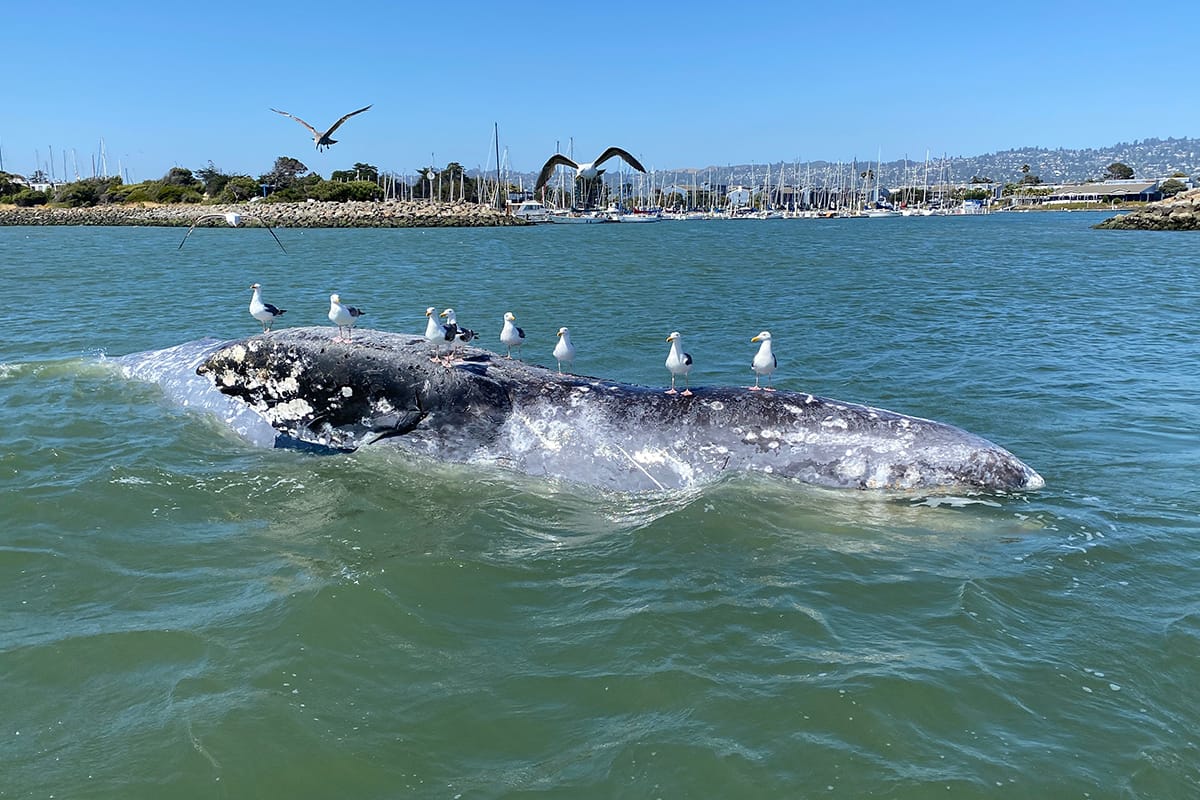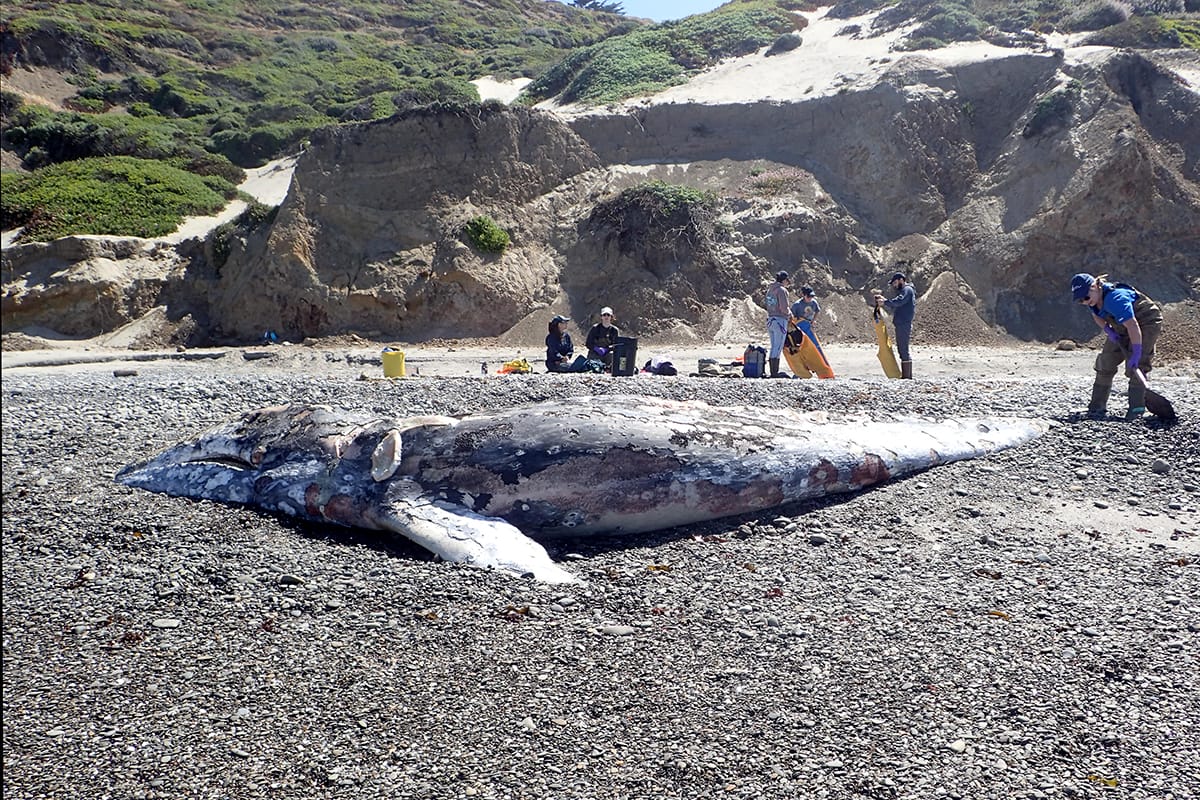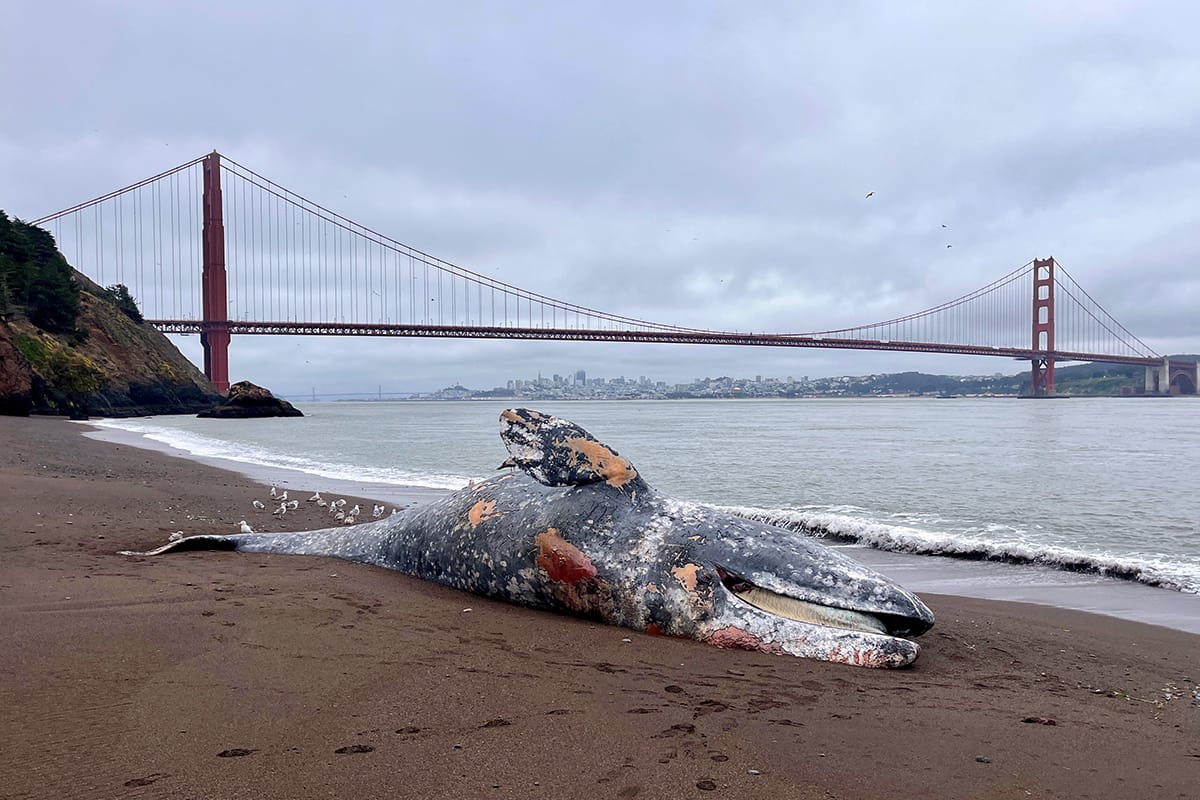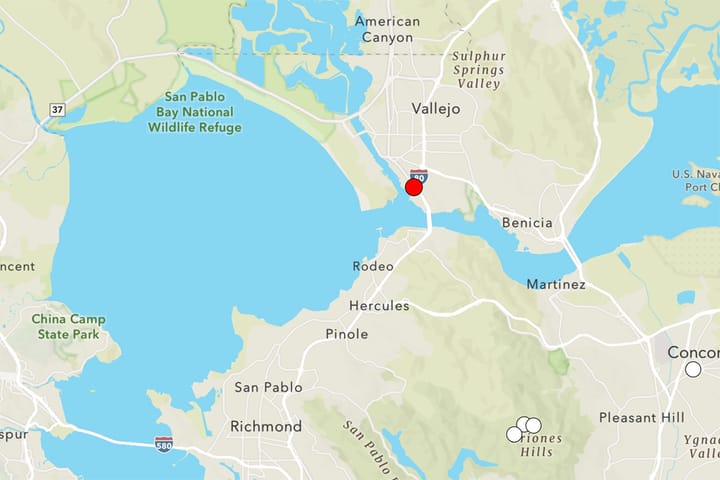5 gray whales found dead in the Bay Area in just a week
Experts are urging boaters of all sizes to be "whale aware" and slow down in the San Francisco Bay due to a "massive spike" in whale sightings.

A subadult female gray whale found dead in Berkeley over the weekend was one of five deceased whales in the region in less than a week, authorities say.
To date, 14 whales — 13 gray whales and one minke whale — have been stranded in the San Francisco Bay Area in 2025 alone, the California Academy of Sciences reported this week.
That's on par with two of the most deadly years observed for whales in the area, which took place from 2019-23 during the "Unusual Mortality Event" of North Pacific gray whale strandings and saw 14 deceased whales in 2019 and 15 in 2021.
The California Academy of Sciences and The Marine Mammal Center shared details about the recent fatalities in a press release Wednesday.
In their statement, officials said they had been unable to perform necropsies on most of the whales "due to inaccessible locations that hinder full post-mortem investigations, as well as poor tissue quality from advanced decomposition, and the lack of available locations to tow for further investigation."

The first animal, a yearling gray whale, was found May 21 in Bolinas; followed by a gray whale in Fisherman’s Bay in the Farallon Islands on May 22; the gray whale spotted in Berkeley on Saturday; and two whales found Monday: a gray whale at Point Bonita in the Marin Headlands and a suspected gray whale seen near Alcatraz Island.
Cal Academy said three of the gray whale deaths this year had been due to suspected or likely vessel strikes.
In this week's statement, experts urged boaters of all sizes to be "whale aware" and slow down in and around the San Francisco Bay.
"Gray whales often have a very low profile … that can make them difficult to sight, unlike other coastal whales like humpback whales," they wrote. "The Center is working with the San Francisco Harbor Safety Committee to find solutions to reduce the risk of vessel strike (including altering ferry lanes based on sighting data this year) and increase mariner communication announcements of heightened whale activity via the U.S. Coast Guard."
Officials said the San Francisco Bay has seen increased gray whale activity this year, which they described as unusual.
There have already been more than 30 individual whales spotted in the bay in 2025 compared to just four last year.
"Roughly one-third of these whales have stayed in the bay for at least 20 days, and their overall body condition has ranged from normal to emaciated," according to this week's statement. "It is expected that gray whales will be in the bay for another one to two weeks before continuing their annual northern migration to arctic feeding grounds."

Researchers are still working to determine what might be driving this year's "massive spike in sightings" in the San Francisco Bay.
They are also still studying the impact of the Unusual Mortality Event (UME) on the eastern North Pacific gray whales population as a whole.
The UME resulted in a population loss of about 45%, authorities said.
And scientists in Southern California observed "record-low calf counts earlier this year, which is a cause for concern."
What should you do if you see a whale in San Francisco Bay?
Authorities ask anyone who sees a whale or dolphins in the bay to share observations via the Whale Alert app on your phone or send them directly to The Marine Mammal Center. If the animal is deceased, you can reach Cal Academy's department of Ornithology and Mammalogy online, and find additional resources on its website.




